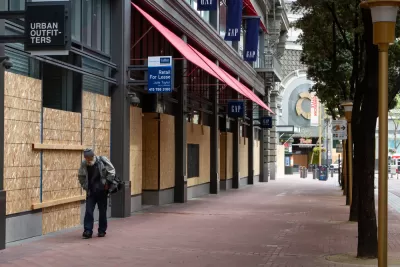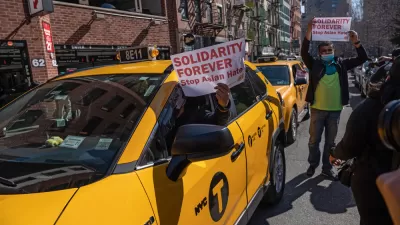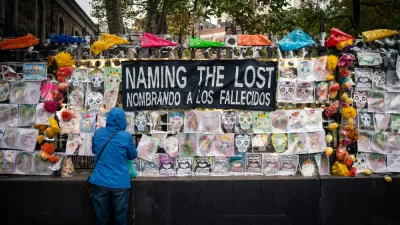Among unwelcome lessons of COVID-19 is growing evidence of what was already broken in politics and business. Ben Brown looks at making bold changes in order to improve the lives of the left out and left behind.

"This is the first of several posts planned for the next few weeks on lessons we’re learning from the pandemic and how local and regional governments might respond – not only to the crisis itself, but also to weaknesses in policies and processes COVID-19 exposed.
"Let’s start with an understatement: Community development leaders – whether they’re in government, non-profits, or the private sector — are likely to remember this time as the most challenging of their lives. Every hard choice is harder, every strategy fraught with uncertainty.
"At the moment, we’re upping the anxiety and the stakes for decision-making as governors in a majority of states bow to pressure to lift stay-at-home restrictions that were intended to slow the spread of COVID-19. Ahead is a series of uncoordinated experiments that will produce as-yet-unknown outcomes everywhere. Officials are betting lives and economies on assumptions that are at once wishful thinking and probably inevitable. We can’t expect people to hide in their homes forever.
"Response to the pandemic is a global challenge. But impacts are felt most quickly and most dramatically in local and regional jurisdictions where people live and work and where Americans tell pollsters they have the most faith in government. It’s also where the resources for responding to the crisis are most threatened."
Brown discusses the leaky pipes of both physical infrastructure and policy, and how doing the biggest little thing may help us deal with the uncomfortable realities and the barriers that must be overcome.
FULL STORY: After the Plague: Go Big or Go Backwards?

Study: Maui’s Plan to Convert Vacation Rentals to Long-Term Housing Could Cause Nearly $1 Billion Economic Loss
The plan would reduce visitor accommodation by 25,% resulting in 1,900 jobs lost.

North Texas Transit Leaders Tout Benefits of TOD for Growing Region
At a summit focused on transit-oriented development, policymakers discussed how North Texas’ expanded light rail system can serve as a tool for economic growth.

Why Should We Subsidize Public Transportation?
Many public transit agencies face financial stress due to rising costs, declining fare revenue, and declining subsidies. Transit advocates must provide a strong business case for increasing public transit funding.

How to Make US Trains Faster
Changes to boarding platforms and a switch to electric trains could improve U.S. passenger rail service without the added cost of high-speed rail.

Columbia’s Revitalized ‘Loop’ Is a Hub for Local Entrepreneurs
A focus on small businesses is helping a commercial corridor in Columbia, Missouri thrive.

Invasive Insect Threatens Minnesota’s Ash Forests
The Emerald Ash Borer is a rapidly spreading invasive pest threatening Minnesota’s ash trees, and homeowners are encouraged to plant diverse replacement species, avoid moving ash firewood, and monitor for signs of infestation.
Urban Design for Planners 1: Software Tools
This six-course series explores essential urban design concepts using open source software and equips planners with the tools they need to participate fully in the urban design process.
Planning for Universal Design
Learn the tools for implementing Universal Design in planning regulations.
City of Santa Clarita
Ascent Environmental
Institute for Housing and Urban Development Studies (IHS)
City of Grandview
Harvard GSD Executive Education
Toledo-Lucas County Plan Commissions
Salt Lake City
NYU Wagner Graduate School of Public Service




























